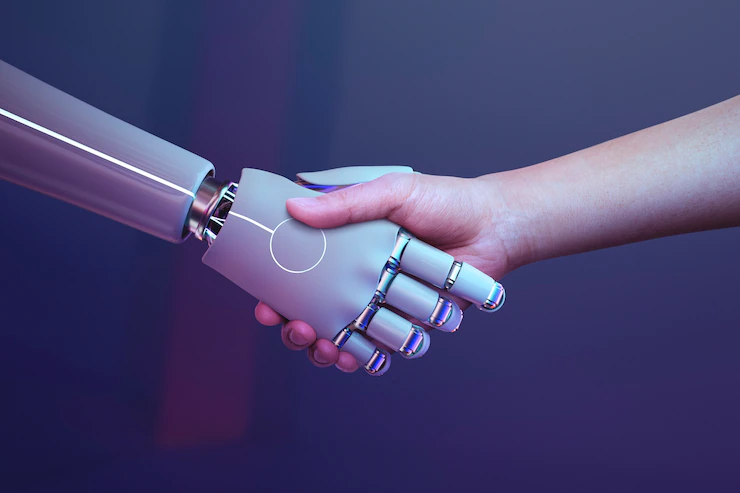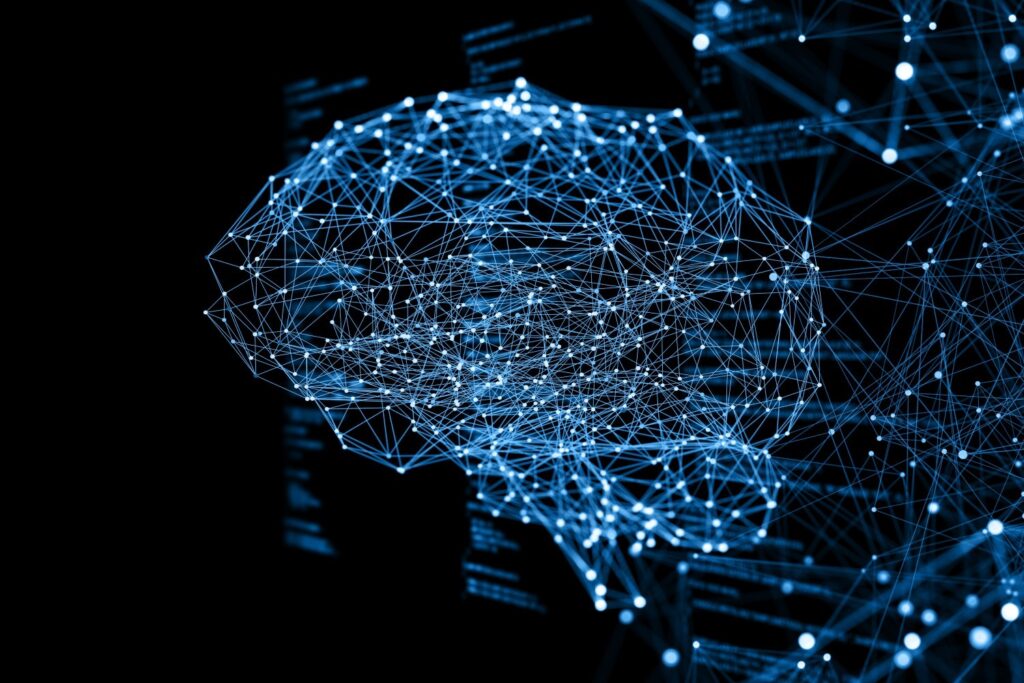To outsource or not to, that is the question. Discover the impact of the recession on outsourcing and its potential benefits for your company.
Artificial Intelligence (AI) has carved its place under the sun. It can be found everywhere, starting with our phones and cameras, search engines, advertisements, and finishing with manufacturing and medicine. AI recommends new albums to listen to, movies to watch, and new things to buy based on your preferences. Shortly, we expect profound AI systems to assist doctors in diagnosing forecasts, and treatment in the early stages.
Thanks to these innovations, daily processes are getting more efficient, forecasts are getting more accurate, and convenient technologies are getting more accessible to a bigger number of people making life easier.
Many of the big enterprises like Microsoft, IBM, Google, and Samsung invest heavily in AI-related research and development. Every year fundings of AI-related startups are raking in dozens of billions of dollars. According to Statista, the global market for AI is set to reach $126 billion by 2025. No wonder researchers claim this field to be one of the most lucrative in the upcoming years.

Difference between AI and traditional programming
Artificial Intelligence relates to the capacity of machines being able to reproduce or simulate human behaviors such as analyzing, making judgments, and making decisions. Although artificial intelligence (AI) is considered to be a rather convenient and popular term, it has no widely agreed-upon technical definition. Most of the progress credited to AI is based on Machine Learning (ML), a subfield of AI where computers learn and recognize patterns from examples (data) rather than being programmed with specific rules. Among various techniques of Machine Learning, Deep Learning is very popular right now. Deep learning is based on neural network technology, similar to human ones. Thanks to this, the computer can recognize non-obvious to traditional algorithms items and complex patterns.
The main difference between software, as an example of traditional programming, and AI is that we write down the exact steps and make specific rules required to solve the problem with the software. If someone wants to eliminate spam messages in their inbox, the developer translates these requirements into code, and the program detects specific keywords and markers. Rules are established, and the program works great, but in real life, not all the keywords can be that easily detected, as well as not every task can be performed with custom algorithms.
When we talk about AI and ML as the way to solve the problem, the computer duplicates human learning behavior. It selects the best option on its own, previously showing the potential outcomes. Plus, it is an uneasy task to translate human thought “this looks weird” into code for a program. Emails may not consist of basic “buy,” “sale,” and “super offer” keywords, but AI will recognize them among other non-spam messages. The main quality of ML algorithms is that they use examples and learn from the outcomes. And that’s precisely where ML can be much more useful.

Process of Artificial Intelligence Development
Research and Problem Identification
AI cannot solve all the problems in the world. Before creating a sound system, think precisely about what issue it should solve and what is the desired outcome to testify AI has succeeded in its mission.
Data Preparation
Well-selected data is 50% of success. Before starting the learning process, engineers select data, check it, organize it, and label it. One minor inconsistency can perplex the whole process and fail in the first iteration. Data should be sufficient, once the AI is overfitted/under fitted it won’t be able to learn and detect required items. There are mainly two kinds of data, namely structured and unstructured. Structured data – has a fixed format to ensure that it remains consistent. And unstructured data – any form of data that does not have a fixed format, like images, audio files, etc. Depending on the algorithm, engineers decide which data type should be used in the process.
Choosing the best language for AI
The programming languages commonly used for AI apps are:
▪ Python – is easily integrated with data structure, allowing developers to expand knowledge with libraries and tools such as NumPy, Pandas, Scikit, AIMA, etc. As for the Deep Learning tasks, widely used Tensorflow, Pytorch, Caffee libraries.
▪ Java – is an object-oriented language and also a multi-paradigm programming language. It differs in a thoughtful approach to exception handling and is more complex in terms of code writing but faster than Python, for instance.
▪ C++ – is globally determined as one of the fastest compilation languages. It allows you to implement highly complex logic without loss of performance. It is commonly used for apps with high-speed animation and immediate user interaction with the rendering engine.
Choosing an algorithm and type of learning
The core and the most important part of building an AI system is the choice of algorithms and type of learning. There are majorly three ways of learning:
▪ Supervised Learning – supervised learning involves the machine being given a dataset on which it would train itself to provide the required results on the test dataset. There are multiple supervised learning algorithms, most frequently used are SVM (Support Vector Machine), Logistic Regression, Random Forest generation, naïve Bayes Classification, etc. As for Deep Learning: ANN, CNN, LSTM, etc. In most cases Supervised Learning techniques are used for regression and classification tasks, but not limited.
▪ Unsupervised Learning – during this type of learning machine categorizes the data, clustering it according to an association, likeness, or variability.
▪ Reinforcement Learning – an artificial intelligence faces a game-like situation in reinforcement learning. The computer employs trial and error to come up with a solution to the problem. To get the machine to do what the programmer wants, the artificial intelligence gets either rewards or penalties for the actions it performs.
Choosing Metrics
When a machine starts to provide the first results, it is vital to examine its correction. The ML engineer chooses the most fitting metric and sets up the process depending on the task. It can be the accuracy evaluation metric, precision, recall, etc.
For example, our Neural Network (NN) is set up to distinguish whether the patients are ill based on their CT results. We have 1000 samples, 998 healthy people (negative) and 2 sick people (positive). The NN distributed patients accordingly 998 people were marked “negative,” 1 sick person as “positive,” but 1 sick person was accidentally marked as “negative.” It is crucial for us that NN works seamlessly. If we choose the accuracy evaluation metric, it will show 99.1% of efficiency, which is awesome but incorrect as one person was ill and marked “negative.”
To analyze the fact where NN failed, we will choose the recall evaluation metric, because it’s more important for us to figure out how good our model is at predicting a specific class (in our case, presence of illness). We take the number of correctly identified cases of sick people (1) and divide by the number of correctly identified + the number of incorrectly identified cases of sick people (2); this metric shows 50%.
That is why choosing the right metrics is important, the truthful result can save someone’s life, instead of the good one.
Platform Selection
Ready-made platforms like Machine learning as a service have been a fundamental and functional structure to help spread machine learning. Such platforms provide engineers with all the necessary services and help with issues like data preprocessing, model training, and evaluation prediction. Platforms commonly used to develop AI software are:
▪ Google’s platform – AI Hub (resources for developing artificial intelligence systems), AI Building Blocks tools, and AI Platform, a code-based data science environment for creating projects from idea to launch.
▪ Microsoft Azure – this platform helps to create, train, and deploy models. Engineers can also use cloud search with built-in AI capabilities of pattern identification in content, sentiment analysis, or keyphrases extraction.
▪ Amazon Machine Learning – services help make, train, and deploy ML models of any complexity. Amazon’s AWS delivers analytics for companies and enterprises and simplifies app-building processes. Services seamlessly integrate with other products and simplify routine procedures.
Besides the already mentioned, there are other engaging AI platforms like Oracle AI cloud services, an open-source Melissa platform, an H2O ML platform with linear scalability, etc. Which platform to choose depends on the problem’s type, business requirements, experience, and the customer’s wishes.
Training the algorithms
After selecting an algorithm, training is the next step in building the AI system. Training and retraining are the keys to building a working AI system because it is natural that you might have to retrain the algorithm if the desired accuracy is not reached.

Benefits of AI
By introducing AI features into the software, companies not only remain up-to-date but also can cover various internal issues such as:
▪ Reduce manual processes of reviewing, exception, or verification of correctness and compliance with standards
▪ Optimize the workforce and remove the extra routine workload from the staff
▪ Minimize human error
▪ Improve workflows and customer satisfaction through intelligent automation.
▪ Get access to deeper data analysis
Thanks to Deep Learning technology, companies can significantly improve their business decision-making quality. AI can process massive amounts of data in seconds and continually increase forecast accuracy. AI tools also help reduce risk and form effective strategies in different domains. Artificial Intelligence is extremely helpful in solving narrower problems like filtering spam in email, speech recognition, and translation into text, intelligent chatbots, and virtual assistants like Siri or Alexa. Unlike their human colleagues, AI-powered systems work 24/7, help with redundant tasks, greatly simplify business procedures and allow them to focus on major assignments.

Sum up
Artificial Intelligence keeps evolving, bringing many more benefits to our life, starting from spam detection and finishing with space exploration. We expect businesses to grow with it, so the potential of this technology is on the rise. If you are ready to enhance your business with AI tools, Proffiz is ready to assist you with it. Over the years our tech experts have created solutions that accelerate the growth of businesses all around the world.
Contact us any time and ensure it

RIP software is software that processes digital images to optimize them for printing. To learn more about it, read this article.

What is prepress software, and how it affects the print process? Read here.




